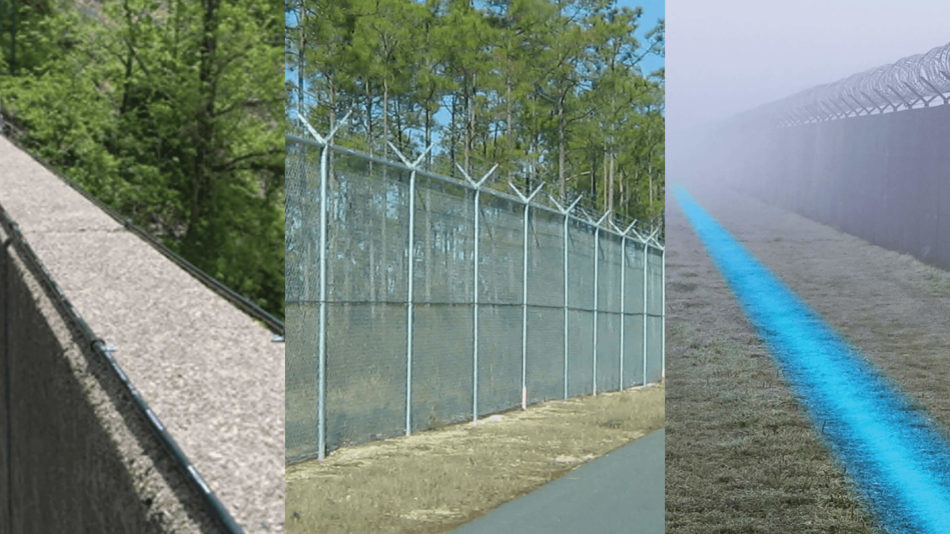Improve Your Safety With Advanced Fiber Optic Security Solutions
In an age where safety is vital, innovative fiber optic security systems present a compelling option for enhancing safety across various atmospheres. What implications do these advancements hold for future security measures?
Advantages of Fiber Optic Safety And Security
Utilizing the advantages of fiber optic technology significantly enhances protection systems across numerous applications. Among the main advantages is the raised data transfer capability, enabling for the transmission of large quantities of data at high speeds. This is especially critical for real-time video clip surveillance, where high-resolution feeds can be sent without latency, ensuring prompt action abilities.
In addition, optical fiber display premium resistance to electromagnetic disturbance, which is important in environments with possible signal interruptions. This reliability makes certain consistent performance in critical protection operations. Fiber optic cords are less vulnerable to tapping and unauthorized accessibility compared to standard copper wiring, therefore improving information integrity and discretion.
One more notable advantage is the durability of fiber optic systems; they are more resistant to ecological factors such as wetness, temperature variations, and corrosive compounds. This durability translates to decrease maintenance expenses and longer life expectancies for security installments.
Lastly, the lightweight nature of fiber optic cable televisions promotes simpler installation and routing, especially in complicated infrastructures (fiber optic security system). Eventually, the combination of fiber optic innovation right into safety systems not only bolsters defense actions but additionally optimizes functional efficiency
Secret Features to Consider
When examining fiber optic safety systems, a number of crucial functions need to be thought about to guarantee optimum efficiency and efficiency. Evaluate the system's detection array and sensitivity; a considerable array enables for checking big areas, while high level of sensitivity ensures that also small disruptions are identified immediately.
Following, consider the assimilation abilities of the system. A fiber optic safety and security system should effortlessly user interface with existing security procedures such as video cameras and alarm systems, developing a cohesive safety network.
Durability and ecological resistance are also essential attributes. Guarantee that the system is made to hold up against rough climate condition and prospective physical hazards, as this will lengthen its functional lifespan.

Last but not least, consider the scalability of the system. A robust fiber optic protection system need to be easily expandable to accommodate future demands without substantial overhauls. By meticulously taking into consideration these features, you can choose a fiber optic safety option that boosts safety and security and security in your environment.
Installment Refine Overview
To efficiently apply a fiber optic security system, a methodical installation procedure is essential. This process starts with a detailed website evaluation to identify the certain safety needs and to recognize optimum locations for fiber optic cables and protection tools. Following this analysis, the setup group will develop a thorough strategy, including cable pathways, required equipment, and compliance with regional policies.
Next, the installment involves laying the fiber optic wires, ensuring they are secured from environmental variables and physical damages. Correct handling methods are important, as fiber optic wires are delicate and can be quickly damaged. After the cabling is set up, connectors and discontinuations are carefully completed to ensure signal stability.
The subsequent phase consists of mounting security devices such as video cameras, motion detectors, and alarm systems, all integrated with the fiber optic network. Rigorous testing is carried out to confirm that all components are functioning learn the facts here now properly and to make certain ideal efficiency.

Contrasting Fiber Optic to Typical Solutions
The development of protection modern technology has caused considerable advancements in the comparison between fiber optic systems and conventional copper-based systems. Fiber optic systems utilize light to transmit data, offering premium transmission capacity and rate contrasted to their copper equivalents. This results in enhanced information transmission abilities, making optical fiber ideal for high-resolution video security and real-time monitoring.
Furthermore, fiber optic cords are resistant to electro-magnetic interference, decreasing the possibility of signal deterioration brought on by exterior aspects. This particular guarantees consistent efficiency, also in challenging settings. In comparison, conventional copper systems are a lot more vulnerable to disturbance, causing possible vulnerabilities in security applications.
Durability is another advantage of fiber optic systems. They are less prone to damage from environmental factors such as dampness and temperature level fluctuations, which can endanger copper electrical wiring. Fiber optics are lighter and thinner, permitting for simpler installation and decreased physical footprint.
However, traditional systems tend to have lower preliminary expenses, making them appealing for budget-conscious projects. While fiber optic systems might need a higher ahead of time investment, their long-term benefits-- look at this now such as reduced maintenance expenses and greater reliability-- typically surpass the first cost, placing them as an exceptional choice for modern safety needs.
Future Fads in Protection Innovation
Emerging patterns in safety and security technology are positioned to change the landscape of monitoring and risk detection - fiber optic security system. As organizations increasingly encounter sophisticated threats, developments such as artificial knowledge (AI) and artificial intelligence (ML) are ending up being integral to security systems. These innovations boost the ability of fiber optic systems by allowing real-time information analysis, determining anomalies, and automating reactions to possible breaches
Furthermore, the integration of the Internet of Things (IoT) is transforming safety and security frameworks. IoT devices can offer thorough situational awareness and facilitate smooth interaction between various security parts. This interconnectedness allows for much more efficient tracking and faster case response times.
Biometric authentication is additionally gaining momentum, supplying a greater level of safety and security with unique physical characteristics. As this modern technology develops, it is most likely to be included visite site into fiber optic systems for enhanced access control.
Conclusion
In verdict, advanced fiber optic safety systems stand for a considerable advancement in safety and security and monitoring modern technology. The transition from traditional systems to fiber optic remedies shows an expanding pattern in the direction of much more reliable and effective safety and security steps in a progressively complex technical landscape.